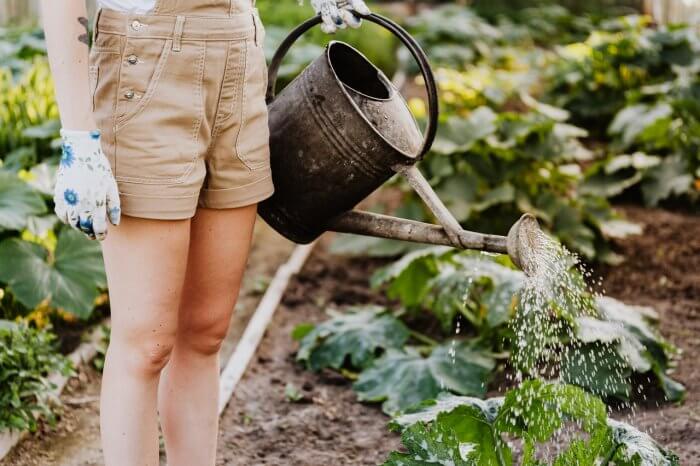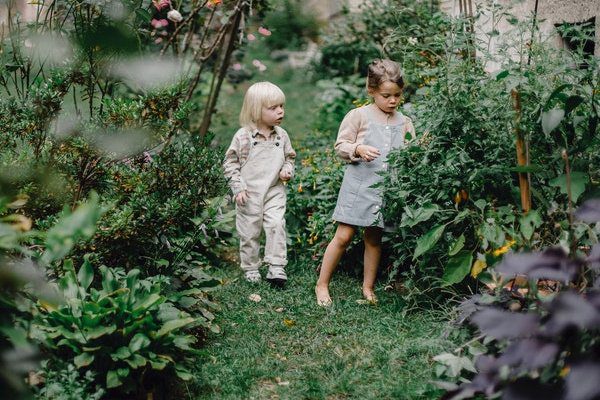
When I talk about small space vegetable growing, there’s always someone in the audience who wants to learn about how to create a small vegetable nursery. As a result, it’s as attractive as it is functional. Many of us grow our organic products, veggies, and flowers in a nursery that is smaller than we would like. If your agricultural ambitions exceed the size of your plot, you can employ a variety of clever design techniques to maximize the space available to you.
Don’t allow a lack of outside space to prevent you from testing your green thumb. Container gardening is the key to growing everything from savory leafy greens to beautiful patterns, trees, and shrubs in less area than you might think.
Read through our imaginative little garden ideas that everyone can do, remembering to bring the outside in if you don’t have a yard or gallery to talk about. Window-box flowers, hanging arrangements, miniature veggie nurseries, and more await your green thumbs.
- Make Use of Vertical Space.
Take advantage of the vertical space available in all gardens, even little ones. To encourage climbers to reach for the stars, you can attach designers to fences or walls, or secure work or trellising. Indeed, even walls hidden at the base may have a lot of sunshine for climbing patterns right now, creating the perfect environment for some permanent patterns of cool, damp roots. vibrant leaves
Typically, delicious kiwi natural goods, grapevines, and a variety of climbing beans, peas, squashes, and vining tomatoes are included in climbing or rambling designs that can be prepared to grow upwards. Make sure the supports are strong enough to hold the designs in place — a squash in full natural product, for example, can be too heavy.
- Make a Privacy Wall Green.
Urban life typically entails cramped confines both inside and out, so make the most of the space you have using vertical deduction. Designer Dan Faires used reclaimed wood from a New York City building that was about to be demolished to create this protection wall with racks filled with trimmed patterns.
- Narrow Niches.
If all you have is a window sill, a slimline gallery, or a pathway, these areas can now be divided into useful divisions or designs. In fact, for climbing designs, integrate some grid linking walls.
- Make it multi-functional.
If you don’t have the space to dedicate your entire nursery to flowers, make it multi-purpose. At the same time, this patio serves as a dining area, a sentimental hangout location (hello, swing seat), and a nursery.
- Mix and Match Designs.
The traditional way is to set aside a specific space for growing vegetables and other ground-grown goods; but, in the tiniest nurseries, this is essentially impossible. Make a team effort to create tasty and ornate artwork. The results can be stunning, and there are various benefits to using this procedure.
Pests have a harder time focusing on explicit crops when blooms and vegetables are designed together. Simultaneously, a plentiful supply of sprouts ensures that beneficial bugs are always present to feed flowering vegetables and a wide range of organic products.
- It’s in the bag.
Do you require more sunlight? Need a different solution because you don’t have enough space for a raised no-burrow garden bed? Regular cloth bags are possibly the most adaptable solutions for a wide range of issues. They not only look amazing and come in a variety of colors but they can also be easily moved around to fit your needs thanks to the handles. They’re also cost-effective and long-lasting.
- Space Maximization Through Succession Design.
Because I only have one raised tank garden in my nursery, there are certain hidden expenditures. I chose an assortment of culinary designs that would evolve on various occasions when I designed it about three months ago. This allowed me to make use of the space around the edges to swiftly build ‘cut and come back again’ patterns. lettuces and blooms (prepared in three months), While the zucchini (which values a lot of personal space) was adorning the interior (around one square meter).
- A place to linger.
Make sure to include chairs in your nursery design because you’ll want it to be a relaxing location as well. Make a seat or seat as rustic or smooth as you want it to be, and surround it with fragrant spices or blossoms to enjoy. When the zucchini arrived at the bed’s margins, I’d already picked the lettuces, so I’d had plenty of food for a long time before its forgetfulness began to obscure the edges, and it began to blossom and produce. The flowers (alyssum and calendula) attracted pollinators as well, so when the zucchini and capsicums bloomed, they had a swarm of friendly visitors to help them set organic fruit!
- Choose the Best Shrub for Shade.
If your yard or patio is shaded, consider developing a steel shed or steel building for showy blue, pink, or purple blossoms (according to the sharpness of your dirt) that will provide a sprinkling of shade from pre-summer to summer.
- Change the Way You Walk.
Convert every unused space in your backyard into a design opportunity. It doesn’t take up a lot of space, yet it has a big impact. Is this a good example? On the steep sides, there are these blooming beds. For some people, steps, patios, and stepping stools scream out to be employed as feasible development areas and simple solutions. Steps are built to be essentially robust in order to support higher weights, such as natural product trees in pots, highlight patterns, and large containers.
11.Your Front Door Should Be Landscaped Astutely.
Even if your entry isn’t large enough for a magnificent nursery, you may still add a splash of greenery. It’ll feel like a zen garden with the correct scene design, a couple of thin trees, a grower, and some little shrubberies.
12. Make the Most of Your Sunroom.
If you don’t have enough outdoor space for a nursery, make use of the radiant space inside your house. You’ll feel as if you’re in a desert garden after eating a big delicacy. A fig tree is also a good idea on a regular basis.
13.Choose fruits and vegetables that produce the most yield in a limited amount of space.
Choose plant species that will help you make the most of your limited area. If you only have 1 sq ft of gardening space, don’t plant cabbage, broccoli, cauliflower, or other brassicas there. You’ll only get one harvest from these plants and each one takes up 1 square foot of space.
Instead, choose plants that produce a lot of fruit in a short space, such as:
- Radishes (radishes)
- iceberg lettuce
- leafy greens
- carrots (carrot)
- garlic
- onions
- arugula
- plants that grow vertically
Tomatoes, cucumbers, squash, pole beans, grapes, and other vine fruits can all be grown on a trellis. Potato towers are a great way to get a big yield in a short space.
- Plants should be kept indoors.
Do you have a window that gets a lot of light? Make a miniature garden out of it. Many herbs, such as basil, chives, parsley, cilantro, thyme, and ginger, can be grown effectively indoors. Try your hand at microgreens or sprouts, both of which are strong in nutrients.
The rigorous production of a wide range of vegetables, roots, and tubers, and herbs in small spaces such as balconies, patios, and rooftops is known as “micro-gardening” While city dwellers have always grown vegetables in backyard plots, modern micro-gardening employs containers like plastic-lined wooden crates, custom-built tables, and even old car tires. It combines horticulture production techniques with city-friendly technology such as rainwater harvesting and garbage management.
Allowing a lack of room to keep you from growing your own food should never be a deterrent. What you can achieve with a small amount of growing area will astound you. We’d love to hear how you make the most of your limited gardening space in the comments below!

